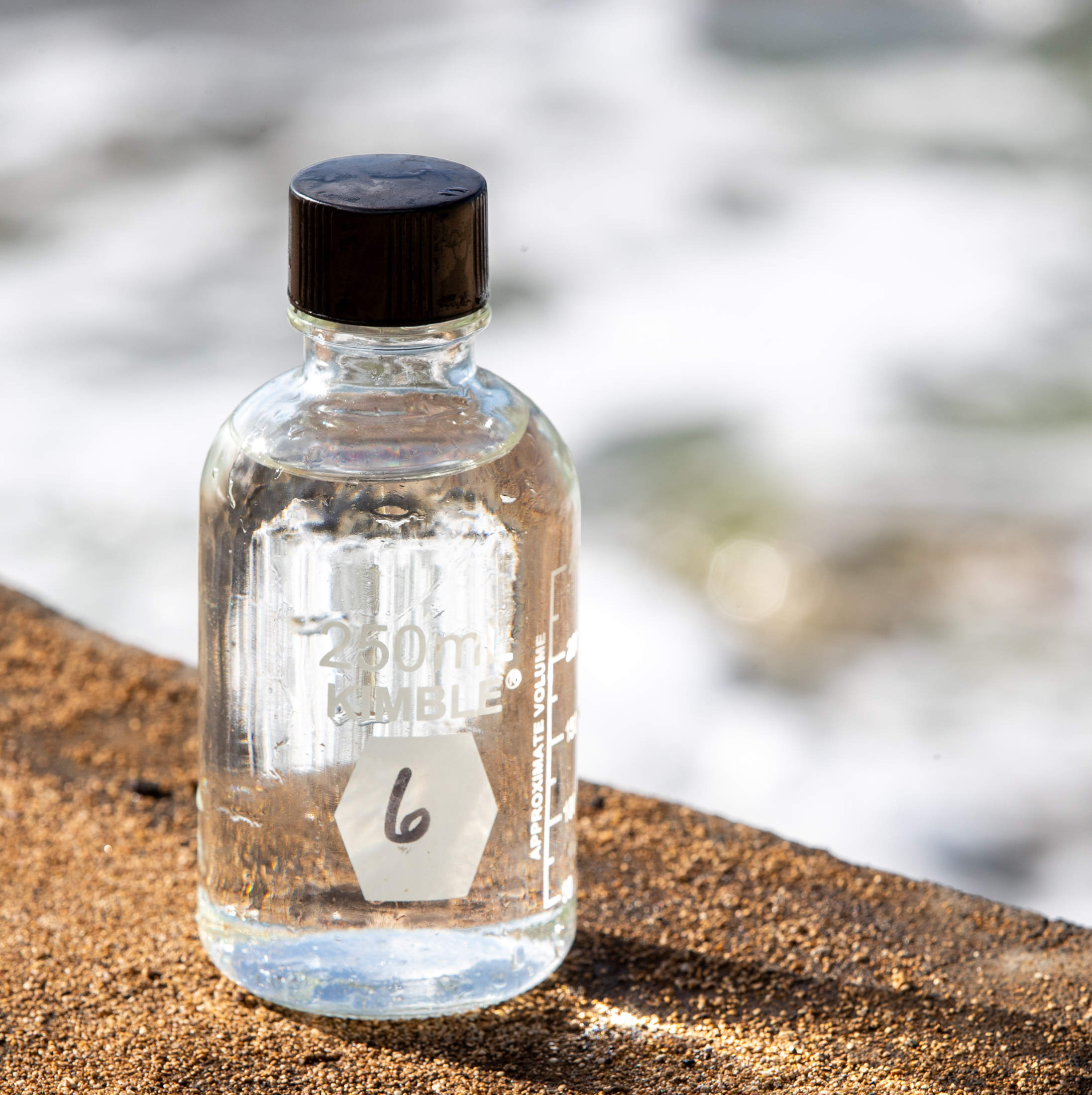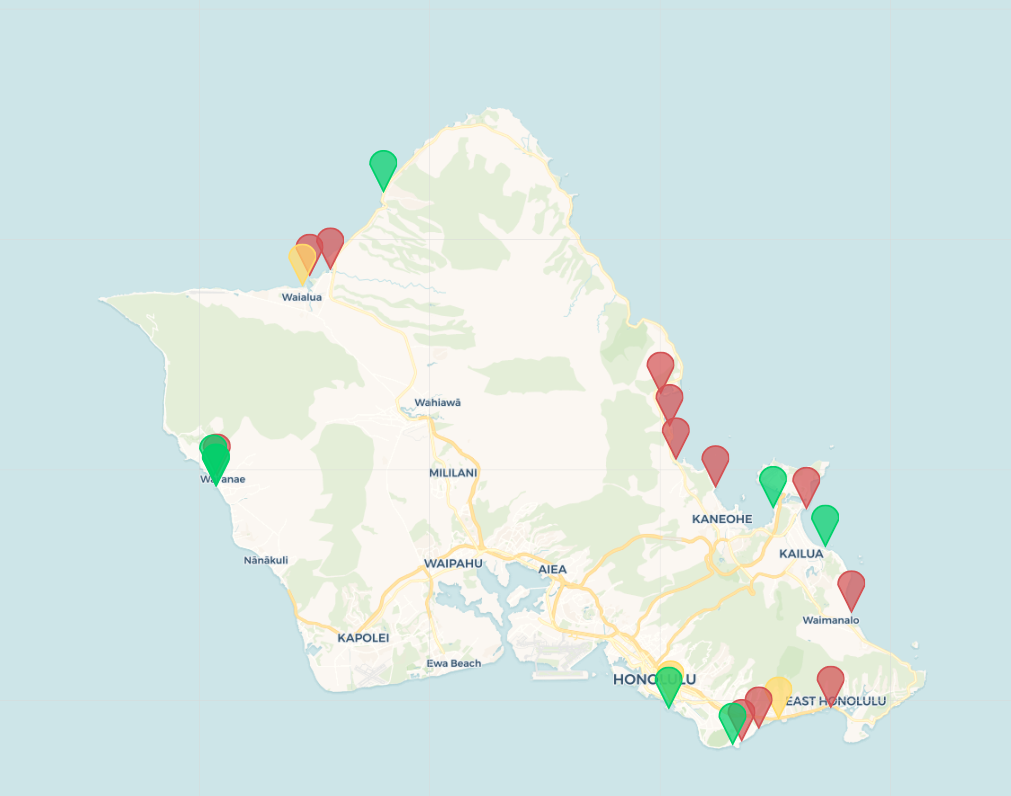%20(1).jpeg)
2022 Oʻahu Water Quality Report
Surfrider Foundation believes that all people should have access to water quality data. Our BWTF program empowers the local community to make informed decisions about where it is – or is not safe to swim.
2022 Overview
Surfrider Foundation’s Blue Water Task Force (BWTF) program released its annual water quality report for 2022. In 2022, volunteers sampled 24 sites. During this time period, 495 samples were collected, generating water quality information for recreational waters along the islandʻs North, South, East, and West shores. Five new sites were added in 2022, notably three sites on West Oʻahu (Kaupuni Stream and two sites at Pōkaʻī Bay). Samples were tested for the presence of Enterococcus, a fecal bacteria that indicates the presence of human or animal waste in the water. Elevated levels of Enterococcus increase the likelihood that other pathogens that can make people sick may be present. Water is considered unsafe if levels exceed 130 Enterococcus forming units/100mL. Sample collection and pollution level standards set by Hawaiʻi Department of Health (HDOH). Samples are processed at the University of Hawaiʻi at Mānoa's Kewalo Marine Laboratory.
Of the 24 sites regularly tested in 2022, seven exceeded health standards over 50% of the year.

Most Polluted Beaches
Of the 24 sites regularly tested in 2022, seven sites (Heʻeia Stream, Kaupuni Stream, Hakipuʻu Boat Ramp, Chocolates, Waiāhole Beach Park, Kuliʻouʻou Stream, Kahaluʻu) had 50% of their samples exceed state health standards. Five of these sites showed similarly high bacteria levels in 2021, while two new sites - Heʻeia Stream and Kaupuni Stream - measured consistently high bacteria readings this past year.
For the first time since 2018, the site "Chocolates" (Haleʻiwa Beach Park) did not have the highest percentage of samples to exceed bacteria readings. In 2022, 59% of the samples at Chocolates exceeded state standards compared to 95% of the samples in 2021.


The Impact of Cesspools
The BWTF chooses sites that are likely subject to higher levels of pollution to track pathogen levels and inform the local community. For example, Kahaluʻu, Hakipuʻu, and Waiāhole are all characterized by high concentrations of coastal cesspools, meaning that there is known wastewater contamination. The chronic pollution documented at these sites by the BWTF indicates the potential impact of sewage pollution in these areas.
“Our data indicates that coastal cesspools are likely contributing to high bacteria readings in certain areas of the island,” said Dr. Dan Amato, Coordinator of the Oʻahu Blue Water Task Force. “In addition, large storms can contribute to elevated bacteria levels in coastal areas as flowing streams wash everything from upstream – pollutants, bacteria, nutrients, pesticides – into the ocean.”
Stop Sewage Pollution
As part of its recently launched STOP Sewage Pollution program, Surfrider Foundation encourages homeowners to improve water quality by following these 8 simple steps:
- Convert your cesspool
- Share your knowledge about the impacts of cesspools on water quality
- Inspect and pump your septic tanks and cesspools regularly.
- Don’t use septic additives.
- Only flush the three P’s (pee, poop and toilet paper)
- Don’t pour cooking grease or oils down the drain.
- Conserve water inside your home.
- Soak up the rain and reduce runoff by directing roof downspouts into a rain barrel or vegetated area.
Community members are encouraged to check water quality results posted online before they head to the beach at bwtf.surfrider.org/explore/44. Current and historic data are available.
